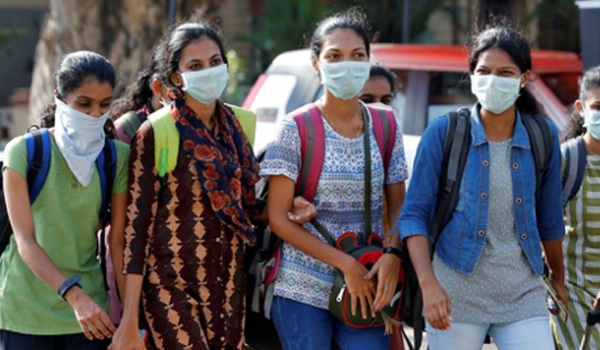
The sexual and reproductive health of adolescents and young adults during the COVID-19 pandemic
by Laura D Lindberg, David L Bell, Leslie M Kantor
Perspectives on Sexual and Reproductive Health, 14 June 2020 (Accepted version)
Abstract
The Covid-19 public health crisis is having rapid and profound effects on how people around the world are living their lives. Adolescents and young adults (AYA) aged 12-24 in the United States are at low risk for hospitalization and death from Covid-19 compared with other age groups. However, the disease may affect other aspects of their physical, mental and social health. Sexual and reproductive health (SRH) touches upon all of these domains, and involves intimate relationships, sexual activity, contraceptive use and abortion care. Evidence of the SRH impacts of previous large-scale disruptions in the United States, including natural disasters and the 2008 recession, suggests that the current pandemic will have serious and sustained effects on young people. AYA will experience the current pandemic in ways that reflect their unique developmental and cohort situations. In this viewpoint, we review potential immediate and longer-term impacts of the Covid-19 pandemic on the SRH needs and behaviors of AYA, and provide direct evidence of Covid-19 impacts where available….
From the main text
The pandemic has brought about dramatic social and economic changes, including social distancing, a period of stay-at-home requirements, nearly universal school closures, increased engagement with parents or other household members, and growing economic insecurity. Among older AYA, college closings, financial issues and the desire to be with family have brought some back into their parents’ households after a period of having gained some independence. These widespread social and economic shifts have disrupted AYA romantic and sexual relationships, as well as their access to affordable and confidential health care services and resources….
Specific consequences: examples
For most young people, social distancing and stay-at-home guidelines have likely resulted in less partnered sex. However, during the pandemic’s initial peak, about one-third of 13-17-year-olds in a national survey reported that they were still meeting close friends in person. Some AYA will continue to engage in partnered sexual behaviors, either in established relationships or with new partners.
While telemedicine and online contraception provision may ultimately expand access to SRH care for AYA, many issues make telemedicine challenging for this age group, due to lack of access to adequate online health care, lack of privacy for online consultations, and the need to pay pharmacy charges for methods.
Young people who are homeless, those who are LGBTQ or trans, those in foster care, the criminal justice system or immigrant (detention) centres will experience increased barriers to SRH care.
From February to early April 2020, HPV vaccinations decreased by 68%.
Sex education in schools was already limited in some areas of the US. It has likely not been included in some online learning and may or may not be made up for later. Adolescents and young people often go online for information. Access to these resources become even more critical during the pandemic. The New York City Health Department put out guidance in March 2020 that said: “You are your safest sex partner.”
Longer term consequences – there may be behavioural shifts as social isolation and physical distancing practices diminish – e.g. “making up for lost time” as regards having more sex, especially during school summer holidays, and possibly more unprotected sex. Any drops in vaccination, testing for STIs, obtaining contraceptives, etc may be made up for, but how much time that will take is unknown. A potentially positive outcome is that the acceptance of a Covid-19 vaccine could increase willingness to accept HPV vaccination. Contraceptive method mix may also shift.
In the recommendations for the future, the following were named:
- ensure the provision of confidential care,
- eliminate restrictions on any SRH service that can be provided via telemedicine, including abortion pills, and support providers in expanding digital access, and
- ensure continued coverage of all SRH services through the Affordable Care Act and within public and private health care plans.
[Note: The issue of funding for services and methods dominated the rest of this list, given the privatised and highly insurance-dependent and expensive cost of health care in the USA.]
PHOTO: by Sivaram V / Reuters – RC20HF93NFZU



